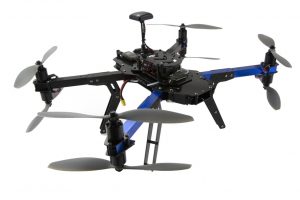Obstacle "Sense and Avoid" using Stereo Vision for Unmanned Aerial Systems
We have received a small award to pursue Stereo Vision on board small unmanned aircraft (aka drones, quad-copters, multi-copters). Obstacle sense and avoid (SAA) on board aerial vehicles is a key technology that needs to be addressed in order to meet the FAA safety requirements for future integration of drones into the civil airspace. Visual approaches, such as stereo vision, can play an important role in meeting these requirements.
We will be working with the 3D Robotics X8 copter and a set of embedded cameras. Students interested in being involved, please contact me.


